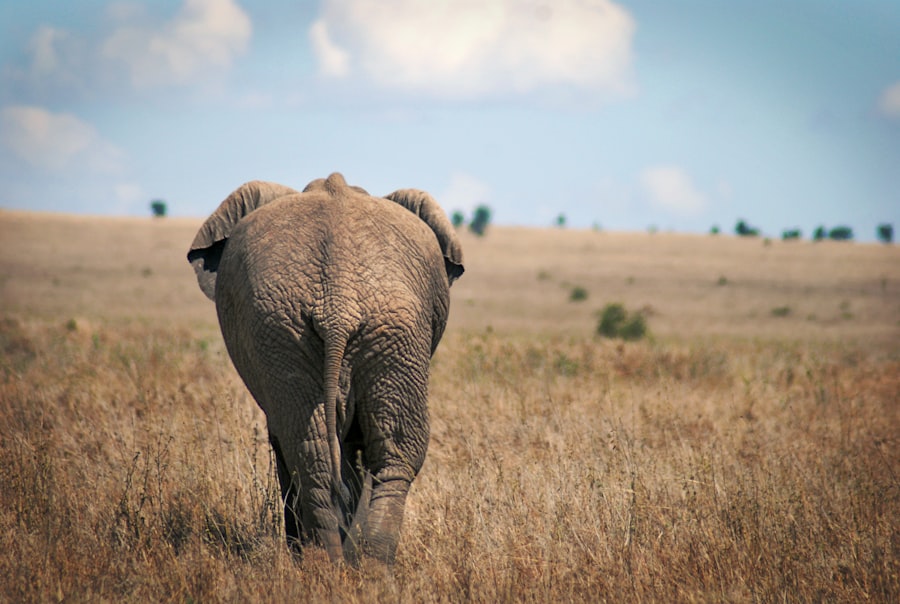The early history of Tanzania is a tapestry woven from the threads of various cultures and peoples.
9 million years ago, found in sites such as Olduvai Gorge. This area is often referred to as the “Cradle of Mankind” due to its rich fossil record, which includes the remains of early hominids like Homo habilis and Homo erectus.
The Bantu migrations, which began around 1000 BCE, brought new agricultural practices and ironworking technology to the region, significantly transforming the social and economic landscape. By the first millennium CE, several distinct ethnic groups had established themselves in what is now Tanzania. The coastal areas saw the emergence of trade networks that connected the interior with the Indian Ocean, facilitating the exchange of goods such as ivory, gold, and slaves.
The Swahili culture began to take shape during this period, blending African, Arab, and Persian influences. The establishment of city-states along the coast, such as Kilwa and Zanzibar, marked a significant development in trade and cultural exchange, laying the groundwork for future interactions with foreign powers.
Summary
- Tanzania has a rich early history, with evidence of human habitation dating back over two million years.
- Arab and European influence in Tanzania began in the 8th century with the arrival of Arab traders, followed by Portuguese and Omani control in the 16th and 17th centuries.
- German colonial rule in Tanzania began in the late 19th century, leading to significant social and economic changes in the region.
- British colonial rule in Tanzania followed German rule after World War I, with the territory known as Tanganyika becoming a British mandate.
- Tanganyika gained independence in 1961 and merged with Zanzibar in 1964 to form the United Republic of Tanzania.
- Post-independence struggles in Tanzania included economic challenges and political instability, but the country also achieved significant milestones in education and healthcare.
- Tanzania has played a key role in regional and international politics, particularly in relation to peacekeeping efforts and the fight against apartheid in South Africa.
- Contemporary challenges in Tanzania include poverty, corruption, and environmental issues, but the country has also seen developments in infrastructure and economic growth.
Arab and European influence in Tanzania
The arrival of Arab traders in the 7th century marked a pivotal moment in Tanzania’s history. These traders established trade routes along the East African coast, leading to the formation of powerful city-states that thrived on commerce. The influence of Islam began to permeate local cultures, resulting in a unique blend of African and Arab traditions.
The coastal cities became centres of trade and culture, where goods such as spices, textiles, and precious metals were exchanged. This period also saw the rise of the Swahili language, which incorporated elements from Arabic and became a lingua franca for trade across East Africa. European interest in Tanzania intensified during the Age of Exploration in the 15th century.
Portuguese explorers were among the first Europeans to arrive, seeking control over trade routes and resources. They established a presence along the coast, particularly in Zanzibar, where they built forts to protect their interests. However, their dominance was challenged by Omani Arabs, who gradually took control of the coastal trade by the late 17th century.
This shift not only altered the dynamics of trade but also led to significant cultural exchanges that would shape Tanzanian society for centuries to come.
German colonial rule in Tanzania

The late 19th century heralded a new era for Tanzania with the advent of German colonial rule. In 1885, Germany declared a protectorate over what was then known as German East Africa, which included present-day mainland Tanzania and parts of Burundi and Rwanda. The Germans sought to exploit the region’s resources, particularly its agricultural potential and natural wealth.
They introduced cash crops such as sisal and rubber, fundamentally altering local economies and agricultural practices. The imposition of taxes and forced labour systems led to widespread discontent among indigenous populations. The German administration faced significant resistance from local communities, most notably during the Maji Maji Rebellion of 1905-1907.
This uprising was sparked by grievances over oppressive taxation and forced labour policies. The rebellion was marked by a coalition of various ethnic groups united against colonial rule. Although it was ultimately suppressed with brutal force by German troops, it highlighted the deep-seated resentment towards colonial authority and set a precedent for future resistance movements.
The harsh reprisals that followed served to further entrench anti-colonial sentiments among Tanzanians.
British colonial rule in Tanzania
Following Germany’s defeat in World War I, Tanzania came under British control as a League of Nations mandate in 1920. The British administration adopted a different approach compared to their German predecessors, focusing on indirect rule through local chieftains while maintaining overall authority. This system allowed for some degree of local governance but often perpetuated existing inequalities and power imbalances.
The British also continued to exploit Tanzania’s agricultural resources, promoting cash crops like coffee and tea for export. The interwar period saw the emergence of nationalist movements as educated Tanzanians began to advocate for greater political representation and rights. The Tanganyika African Association (TAA), founded in 1929, became a significant platform for expressing these aspirations.
However, it was not until after World War II that nationalist sentiments gained momentum. The post-war period was characterised by increased political activism, culminating in the formation of political parties such as the Tanganyika African National Union (TANU) led by Julius Nyerere. Nyerere’s vision for a united and independent Tanganyika resonated with many Tanzanians who yearned for self-determination.
Tanganyika’s independence and formation of Tanzania
Tanganyika achieved independence from British colonial rule on December 9, 1961, marking a significant milestone in its history. Julius Nyerere became the first Prime Minister and later the first President of the newly independent nation. His leadership was characterised by a commitment to socialism and African unity, which he articulated through his philosophy of Ujamaa (familyhood).
Nyerere sought to create a society based on collective ownership and self-reliance, aiming to uplift rural communities through agricultural development and education. In 1964, just three months after gaining independence, Tanganyika united with Zanzibar following a revolution that overthrew its Arab-led government. This union formed the United Republic of Tanzania, a significant political development that aimed to consolidate power and resources across both regions.
The merger was not without challenges; ethnic tensions and differing political ideologies between the mainland and Zanzibar created complexities that would shape Tanzania’s political landscape for decades to come.
Post-independence struggles and achievements

In the years following independence, Tanzania faced numerous challenges as it sought to implement Nyerere’s vision for a socialist society. The Ujamaa policy aimed at collectivising agriculture led to mixed results; while it sought to improve rural livelihoods through communal farming initiatives, it often faced resistance from farmers accustomed to individual land ownership. Economic difficulties compounded by external factors such as global market fluctuations resulted in food shortages and economic stagnation during the 1970s.
Despite these struggles, Tanzania made notable achievements in education and healthcare during this period. Nyerere’s government prioritised access to education for all citizens, leading to significant increases in literacy rates. By investing in healthcare infrastructure, Tanzania also made strides in improving public health outcomes, particularly in combating diseases such as malaria and HIV/AIDS.
These efforts laid a foundation for social development that would benefit future generations.
Tanzania’s role in regional and international politics
Tanzania has played a significant role in regional politics since its independence, often positioning itself as a leader in promoting African unity and solidarity. Nyerere was an outspoken advocate for pan-Africanism and supported liberation movements across southern Africa during the struggle against colonialism and apartheid. His government provided refuge and assistance to various liberation groups from countries such as Mozambique, Angola, and South Africa, fostering a sense of collective responsibility among African nations.
On an international scale, Tanzania has been active in various multilateral organisations such as the African Union (AU) and the United Nations (UN). It has contributed troops to peacekeeping missions in conflict zones across Africa, demonstrating its commitment to regional stability. Additionally, Tanzania has engaged in diplomatic efforts to mediate conflicts within East Africa, showcasing its role as a stabilising force in a region often beset by political turmoil.
Contemporary challenges and developments in Tanzania
In recent years, Tanzania has faced several contemporary challenges that have tested its political stability and economic growth. Issues such as corruption, human rights abuses, and restrictions on freedom of expression have garnered international attention. Under President John Magufuli’s administration (2015-2021), there were reports of crackdowns on dissenting voices, including journalists and opposition leaders.
This environment raised concerns about democratic governance and civil liberties within the country. Economically, Tanzania has experienced growth driven by sectors such as tourism, agriculture, and mining; however, disparities remain evident between urban and rural areas.
As Tanzania navigates these complexities, it continues to seek pathways towards sustainable development while addressing pressing social issues that affect its population. In summary, Tanzania’s rich history is marked by diverse influences that have shaped its identity over millennia. From early human habitation through colonial struggles to contemporary challenges, each phase has contributed to the nation’s unique narrative within East Africa and beyond.
FAQs
What is the history of Tanzania?
Tanzania has a rich and diverse history, with evidence of human habitation dating back to around 1.8 million years ago. The region has been influenced by various indigenous cultures, Arab traders, and European colonial powers.
When did Tanzania gain independence?
Tanzania gained independence from British colonial rule on December 9, 1961. The country was formed by the union of Tanganyika and Zanzibar in 1964, becoming the United Republic of Tanzania.
What were the major colonial powers in Tanzania?
Tanzania was colonized by various powers, including the Portuguese, Arabs, Germans, and British. The mainland was under German rule from the 1880s until the end of World War I, when it was mandated to the British.
What was the impact of colonialism on Tanzania?
Colonialism had a significant impact on Tanzania, including the introduction of cash crops, infrastructure development, and the establishment of administrative systems. However, it also led to the exploitation of natural resources and the suppression of indigenous cultures.
Who were the key figures in Tanzania’s struggle for independence?
Key figures in Tanzania’s struggle for independence include Julius Nyerere, who became the country’s first president, and Abeid Karume, the first president of Zanzibar. These leaders played crucial roles in the fight for self-determination and the formation of the united republic.
What is the significance of the Maji Maji Rebellion?
The Maji Maji Rebellion, which took place from 1905 to 1907, was a major uprising against German colonial rule in Tanzania. It was one of the first significant African resistance movements against European imperialism and had a lasting impact on the country’s history.
How has Tanzania’s history shaped its culture and society?
Tanzania’s history has had a profound influence on its culture and society, shaping its diverse ethnic groups, languages, and traditions. The country’s history of independence struggle and nation-building has also contributed to its strong sense of national identity.


